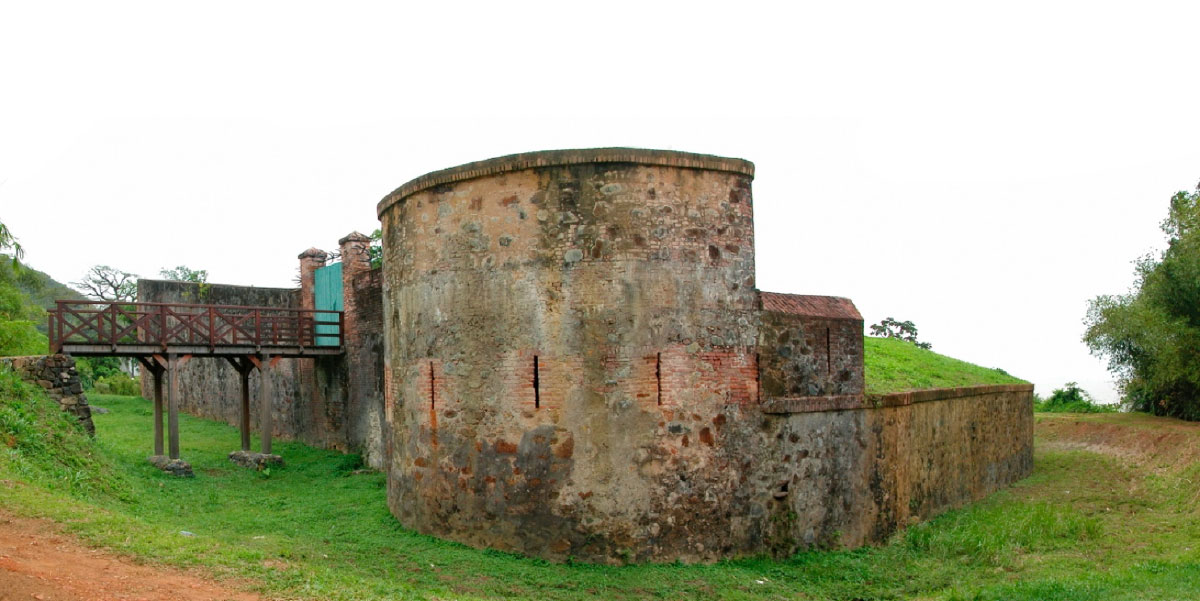Fort Diamant, A Little French Gem in South America
The presence of France has been documented in the Caribbean and Latin America for centuries. Today, French Guiana, located in South America, is part of France and the only territory of the mainland Americas that is still part of a European country. It is regarded as much a part of the nation as Brittany or Normandy.
Little is known about the history of the area, but Fort Diamant is one of the most important historic sites in all of French Guiana as it played a crucial role in the development of the original region.
The History of Fort Diamant and French Guiana
After the ‘discovery’ of the Americas by Columbus in 1492, the Spanish claimed most of the continent. They landed on what is now French Guiana and decimated the local Amerindian communities through war. They did not, however, have the manpower to control the extensive territories, which enabled other European kingdoms to establish settlements in the Caribbean and South America.
The French established a colony and trading center on the Caribbean coast of South America in the 1650s. The wooden fort they first built on the site of the present-day Fort Diamant, was erected to protect the settlement at Cayenne and used as a place of refuge for the French as they were regularly attacked by local Amerindian Arawak tribes.
- Battles of the Caribbean: Fort Rodney, St Lucia – Built by the British to Spy on the French
- DNA test on bloody gourd reveals it is not from decapitated King Louis XVI
- Simon Bolivar, The Liberator and Revolutionary Hero Who Freed South America

Location of French Guiana (Google Maps )
The original fort was also used to defend the French colony from the Dutch. From the seventeenth century until the end of the eighteenth century, French Guiana was ruled successively by the Dutch, British, French and Portuguese who all wanted control of this lucrative region.
During the French Revolutionary Wars, the French navy and marines garrisoned the fort and repelled a number of attacks from the Portuguese, who were based in Brazil. At the time, French Guiana was a penal colony, where many of those who were spared the guillotine by Robespierre, were sent.

Bertaux’s ‘Storming of the Tuileries Palace’ during the French Revolution (Public Domain)
An Anglo-Portuguese force seized Cayenne and the fort in 1809, although in 1817, French Guiana was permanently awarded to Paris. In the 1840s the French began to build the fort as gold had been found in the colony. Progress was slow due to shortage of labor and materials.
Before long, the gold was exhausted and French Guiana was neglected by the French government. The fort was subsequently used to protect the colony from the many former African slaves who had created their own self-governing communities in the jungle, as well as the still unconquered tribes of Indians in the 19 th century.
The Sights at Fort Diamant
In the 1980s the fort was partially restored, and it is now protected under French law.
This 19 th-century fort is 492 feet (150m) long and sits on land of about 2.2 square miles (3600-meter square). It is surrounded by a moat once filled with water and accessed by a narrow causeway or bridge.

Aerial view of Fort Diamant (CC BY-SA 4.0)
Although most of the defenses face the sea, a single tower faces landward. The fort and its ancillary buildings are all built from local basalt rocks with walls 6 feet thick (almost 2m) and as a result is distinctively dark in color. The redan, an arrow-shaped embankment was built to face attack from the sea. An artillery platform holds three artillery pieces, while five cannons sit on a half-moon platform.
Within the fort are a number of barracks as well as a small prison consisting of nine cells with heavy, reinforced wooden doors.
Visiting Fort Diamant and its Surrounds
Fort Diamant is situated at the mouth of the Mahury River, not far from the capital city of Cayenne.
Unfortunately, the state of the walls and some of the buildings is a cause of concern and investment is needed to preserve the site. Because of the condition, the fort is only open to the public on a limited number of days and there is no information available at the site about its history.
The magnificent scenery surrounding the fort make this a popular tourist destination as do the many surrounding trails. The spectacular beach nearby and some picnic tables add to a great day out.
Top image: Fort Diamant. Source: CC BY-SA 3.0
By Ed Whelan
References
Kelly, K. G., & Hardy, M. D. (2011). French Colonial Archaeology in the Southeast and Caribbean. University Press of Florida
Available at: https://muse.jhu.edu/book/17958
Kostyu, D. D., & Amos, D. B. (1981). Mysteries of the Amerindians. Tissue Antigens, 17(1), 111-123
Available at: https://onlinelibrary.wiley.com/doi/abs/10.1111/j.1399-0039.1981.tb00674.x>
Redfield, P. (2000). Space in the tropics: from convicts to rockets in French Guiana. Univ of California Press
Available at: https://books.google.ie/books?hl=en&lr=lang_en&id=caUwDwAAQBAJ&oi=fnd&pg=PR7&dq=+history+of+french+guiana+&ots=fvqgi5F-Hj&sig=Ki28uhgh-MJ6IQCA9ihRcgR5AmM&redir_esc=y#v=onepage&q=history%20of%20french%20guiana&f=false

















